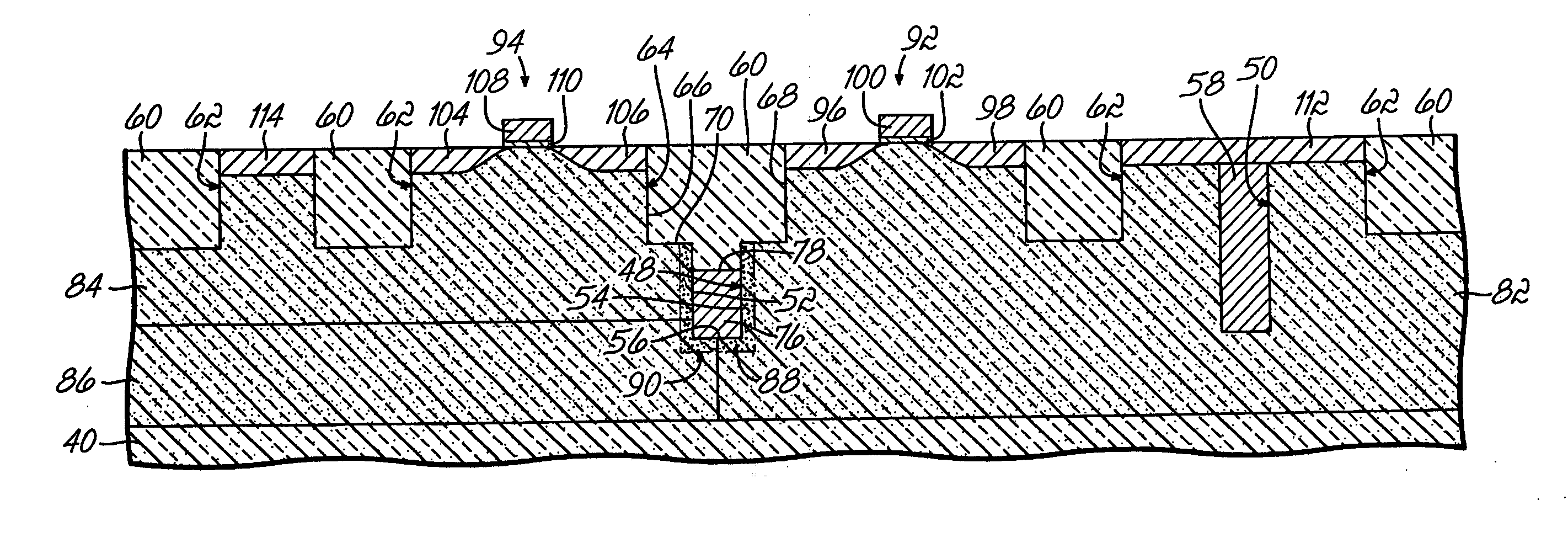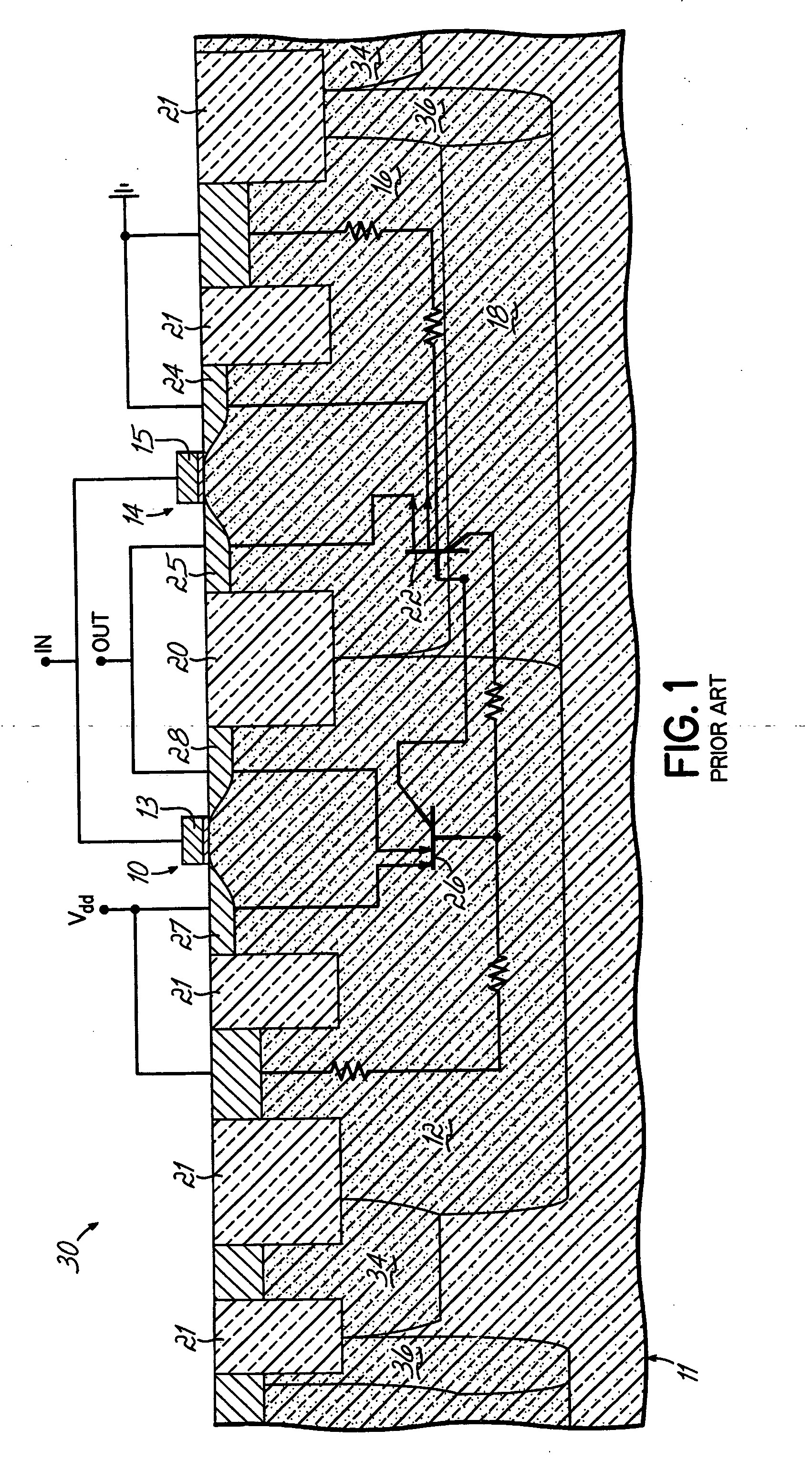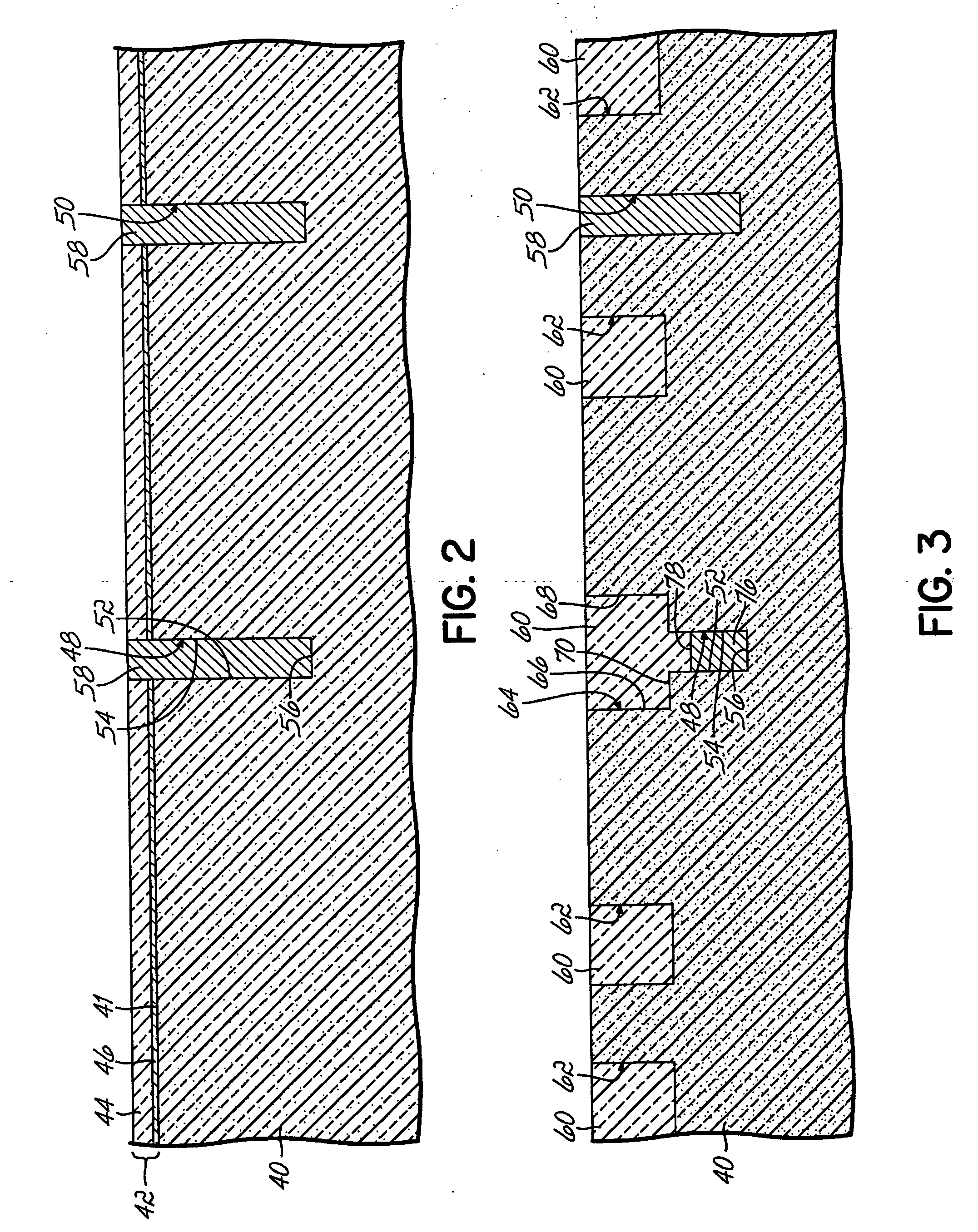Methods and semiconductor structures for latch-up suppression using a buried conductive region
- Summary
- Abstract
- Description
- Claims
- Application Information
AI Technical Summary
Benefits of technology
Problems solved by technology
Method used
Image
Examples
Embodiment Construction
[0021] The present invention provides a buried guard region that limits the effect of the vertical parasitic NPN structure and the lateral parasitic PNP structure responsible for latch-up in triple-well bulk complementary metal-oxide-semiconductor (CMOS) devices. The invention is advantageously implemented in the context of bulk CMOS devices in which pairs of N-channel and P-channel field effect transistors are formed adjacent to each other in a P-well within an N-band and an N-well, respectively, and the P-well is isolated from the N-well by a shallow trench isolation (STI) region. Specifically, latch-up in a standard bulk CMOS triple well structure is suppressed by the addition of a heavily doped n-type region (i.e., N-well strap) diffused into the semiconductor material bordering a deep vertical extension of the trench in which the STI region is formed. The N-well strap bridges the N-well and the N-band and has a higher dopant concentration than either the N-well or the N-band. C...
PUM
 Login to View More
Login to View More Abstract
Description
Claims
Application Information
 Login to View More
Login to View More - R&D
- Intellectual Property
- Life Sciences
- Materials
- Tech Scout
- Unparalleled Data Quality
- Higher Quality Content
- 60% Fewer Hallucinations
Browse by: Latest US Patents, China's latest patents, Technical Efficacy Thesaurus, Application Domain, Technology Topic, Popular Technical Reports.
© 2025 PatSnap. All rights reserved.Legal|Privacy policy|Modern Slavery Act Transparency Statement|Sitemap|About US| Contact US: help@patsnap.com



